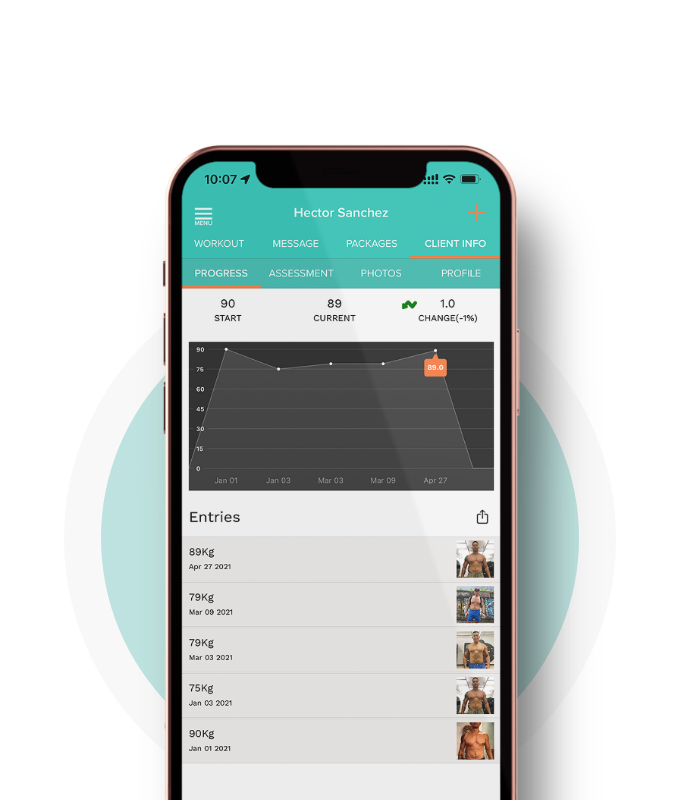Creating a Healthy Environment: A Guide for Personal Trainers
As personal trainers, we play a vital role in guiding our clients towards healthier lifestyles. Beyond exercise routines and fitness plans, creating an environment conducive to success is crucial. One of the most significant challenges our clients face is resisting the temptation of junk food. In this article, we will discuss strategies to make it as inconvenient as possible to indulge in unhealthy eating habits, emphasizing the importance of removing junk food from the home, abstaining from liquid calories, understanding weight loss mechanisms, and prioritizing protein consumption.
Making Junk Food Inconvenient
How convenient is it for your clients to eat junk food? Convenience plays a significant role in the choices people make regarding their diet. Fast-food restaurants and vending machines filled with sugary snacks are everywhere, making it all too easy to succumb to unhealthy cravings. As personal trainers, we need to help our clients disrupt this convenience.
-
Meal Preparation: Encourage your clients to plan and prepare their meals in advance. Provide them with simple, nutritious recipes that are easy to cook and take on-the-go. This way, they'll have healthy options readily available when hunger strikes.
-
Healthy Snacks: Suggest that they carry healthy snacks, like nuts, fruits, or protein bars, with them. When they're hungry between meals, they won't be as tempted by junk food if they have a nutritious alternative readily accessible.
-
Avoid Drive-Thrus: Advise your clients to avoid drive-thrus at all costs. These fast-food pit stops may be convenient, but they are a breeding ground for unhealthy food choices.
Removing Junk Food from Home
The saying "out of sight, out of mind" holds true when it comes to junk food. As personal trainers, we should guide our clients in decluttering their homes of unhealthy temptations.
-
Kitchen Cleanse: Encourage your clients to go through their kitchens and remove all junk food. Replace these items with wholesome alternatives. A kitchen stocked with healthy choices makes it easier to maintain a balanced diet.
-
Grocery Shopping Strategy: Teach your clients how to make healthier choices when grocery shopping. Emphasize the importance of reading nutrition labels and sticking to the perimeter of the store, where fresh produce and lean proteins are typically located.
Avoid Drinking Calories
Many people underestimate the impact of liquid calories on their overall caloric intake. As personal trainers, it's crucial to educate our clients about the importance of drinking wisely.
-
Hydration: Emphasize the importance of water as the primary beverage. Sodas, sugary juices, and energy drinks can quickly add unnecessary calories to one's daily intake.
-
Mindful Drinking: Encourage your clients to be mindful of what they drink. Opt for unsweetened tea, black coffee, or naturally flavored water instead of calorie-laden alternatives.
Understanding Weight Loss Mechanisms
Do your clients truly understand how their bodies lose weight? As personal trainers, it's essential to demystify the process to help them make informed choices.
-
Caloric Deficit: Explain that weight loss primarily occurs when they consume fewer calories than they burn. Encourage tracking daily caloric intake and expenditure to monitor progress.
-
Regular Exercise: Remind your clients that exercise is a crucial component of weight loss. It not only burns calories but also helps build muscle, which boosts metabolism.
-
Consistency: Stress the importance of consistency. Weight loss is a gradual process that requires dedication and commitment over time.
The Importance of Protein
Do your clients know why protein is more important to consume than carbs and fats? Educating them on this topic can help them make better dietary choices.
-
Muscle Preservation: Explain that protein plays a vital role in preserving lean muscle mass during weight loss. This is essential for maintaining a high metabolism.
-
Satiety: Highlight that protein-rich foods are more satiating, reducing the likelihood of overeating. Encourage them to include lean protein sources in each meal.
-
Thermic Effect: Mention the thermic effect of food, which is higher for protein compared to carbs and fats. This means the body burns more calories digesting protein-rich foods.
Creating an Environment for Success
Ultimately, our role as personal trainers is to create an environment where our clients can succeed in their fitness and nutrition goals.
-
Support and Accountability: Offer continuous support and accountability. Regular check-ins, progress assessments, and adjustments to their fitness plans can keep them on track.
-
Set Realistic Goals: Help your clients set achievable, short-term goals that lead to their long-term objectives. Celebrate their successes along the way to keep them motivated.
-
Cultivate a Positive Mindset: Encourage a positive mindset towards health and fitness. Remind them that setbacks are normal and part of the journey, and the key is to persevere.
Conclusion
As personal trainers in the United States, we have a significant impact on our clients' lives. By helping them make junk food less convenient, remove unhealthy temptations from their homes, avoid liquid calories, understand the mechanics of weight loss, and prioritize protein consumption, we can guide them toward a healthier and more sustainable lifestyle. Let's work together to create an environment where they can succeed in their fitness and nutrition goals, ultimately leading to a happier, healthier life.
Hector Sanchez
CEO, The Training Notebook




